Australian Tea Week! Day 1: “The Arakai Estate”
Australia.
The Land Down Under. Oz. Or whatever other people (including the locals) call it. Our southernmost Pacific neighbor is known for many things: weird and diverse wildlife, a wicked sense of humor, numerous flora and fauna that can kill you in a heartbeat, sometimes good beer . . . and . . . women. Oh my, the women!

One day, Rebel. One day.
Where was I? Oh yes . . .
One thing people might not know, however, is that parts of continent have taken up tea growing as a trade. They’ve tried their hand at it since the 1880s. Of course, because Australia is . . . well . . . Australia, sustainable plantings didn’t take hold successfully until around the 1960s. However, since then, many operations have emerged—Daintree, Madura, etc.
Which brings me to the Arakai estate—a garden in Bellthorpe, Queensland, Australia.
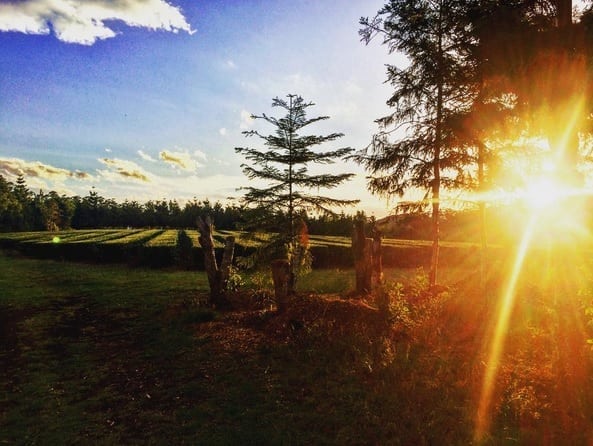
Image owned by the Arakai estate
By tea estate standards, it’s a relatively young outfit. In fact, it didn’t even start out as a tea garden at all. In 1999, when the Collins family (Darryl and Lorraine, respectively) acquired the property, it was to break ground and start a forestry farm. The name “Arakai” is even derived from the species of tree the farm specializes in—Araucaria.
The necessity for another, year-round crop to go along with their timber harvesting efforts—and a news report—is what led them to consider growing tea as an option. Spear-headed by the Collins’ son, Brendon, and his wife Kristie. Over a three-year period of time, they planted 12,500 tea bushes on a hectare of land. At present, they have over 5 kilometers worth of tea bush rows—all Japanese cultivars.
What I found most fascinating was how they did their harvesting. They used this. . .

Image owned by the Arakai estate.
Yes, a freakin’ bike-powered harvester; their own creation. I dunno what to say, that’s just awesome.
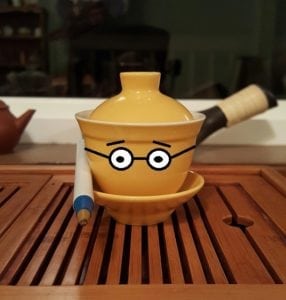
Editor Skippy: We were later informed that the bike harvester—while awesome—actually has gasoline-powered cutters. Not pedal-powered. Apologies for the comfusion.
Their first harvest occurred in 2015. It was rather well-received. They even won a few awards.
The Arakai tea estate showed up on my radar through—of all places—Instagram. (That seems to be happening a lot lately.) Not sure who followed who first, but I kept gentle tabs on their updates with keen (near salivating) interest. I wasn’t sure when/how I could procure some of their wares, given that shipping anything from Australia is a nightmare.
Luckily, UK-based online vendor favorite What-Cha Tea saved me the trouble. They started carrying their 2016 harvest. I bought both the Arakai summer offerings . . . pretty much the moment I found them on there.
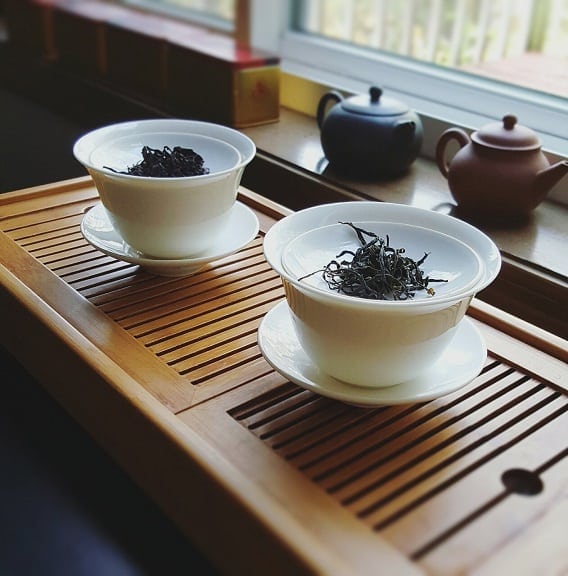
For brewing, I approached them both exactly as one would expect. Black tea: Boiled water, three minute steep—one teaspoon, 6oz. gaiwan. Green tea: Same time, same ratio—175F water temp, also a one-minute steep (per the What-Cha recommendations.) Done.
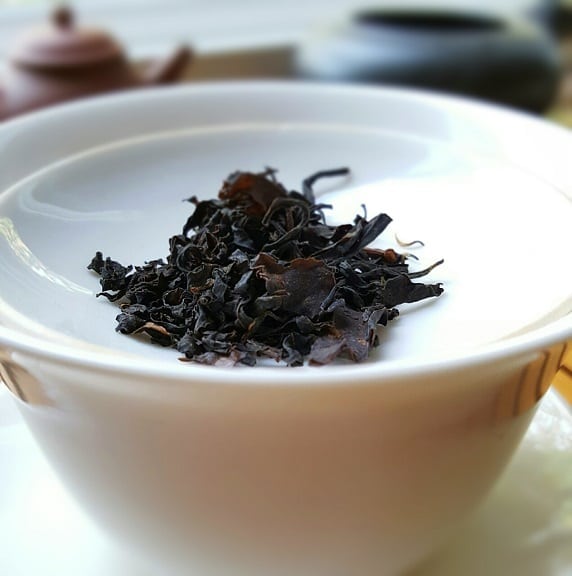
The black tea leaves looked like black tea leaves, but with no rolling technique I’d ever seen before. Well, correction, I had seen similar leaf cuts before, but they were usually more uniform. The average leaf length here ranged from BOP to FBOP—short clumps to medium length, nary a whole leaf piece in the fray. This was fine by me. As long as they weren’t fannings or dust, I was satisfied. The aroma they gave off reminded me of a Ceylon Uva by way of a Taiwanese black. Floral at the front, woody in the middle, and with a hint of honeynut sweetness on the back-end.
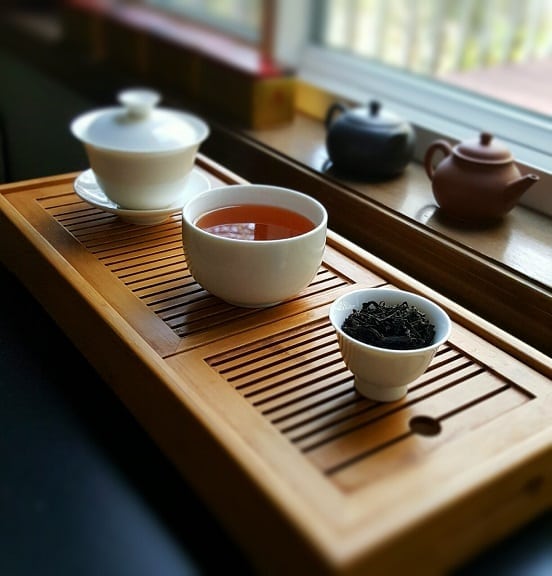
The liquor brewed to a lovely soft copper with hints of bronze. The aroma from the billows of steam were pure chocolate malted chestnuts with something “cooling” on the back-whiff. It smelled like a Ruby 18 . . . only memorable. On taste, it started off a lot like a Ceylon with a floral front. I pretty much expected that, but it did an evergreen Ruby 18 back-flip in the middle, and ended on Darjeeling second flush finish; minus the muscatel.
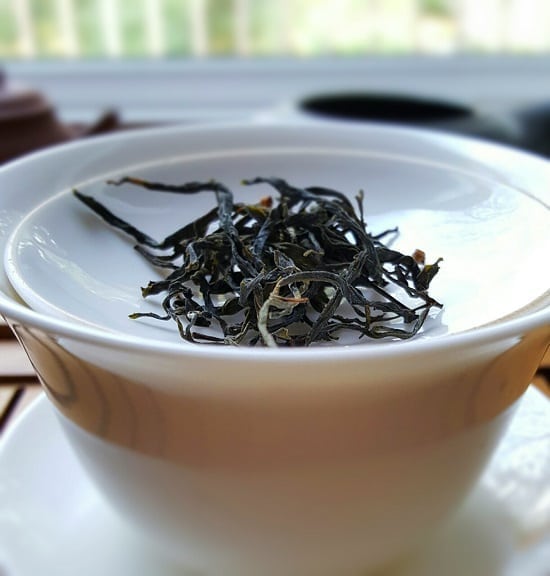
The green tea leaves were surprisingly varied in color, ranging from dark forest green to woody brown. They also had a longer appearance in contrast to the black tea. Long, twisty and rolled; they were similar in appearance to a German green tea I tried, or even a Russian. The aroma they gave off was also unique. No grassiness was present, no vegetal underpinning, no umami-clad nuts or veiled stone fruits. Instead, I got a vague whiff of herbal citrus (like verbena) and some other tropical weed impression. Like Ko’oko’alau from Hawaii—robust but soft.
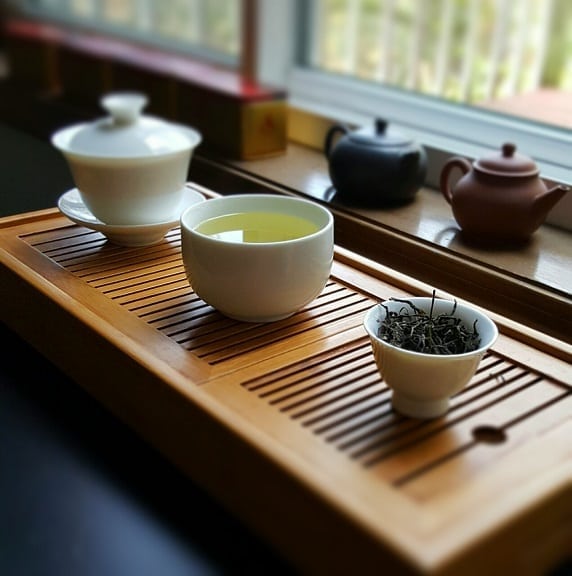
At around a minute, the liquor brewed to a mild, soft, unassuming, light green—like someone had robbed a lemon of half its color and smeared it with lime juice. (No, I don’t condone violent . . . fruit imagery. I don’t think.) There wasn’t much of a steam aroma to speak of; mildly grassy with a smidge of cantaloupe. Nope, all the hoopla showed up in the flavor. There was a mild, tropical fruit forefront that gradually rose to a hearty Chinese Mao Feng top note, and then slid on down into Korean junjak country. The whole experience—minus any perceived grassiness—was a lot like a Darjeeling green tea session.
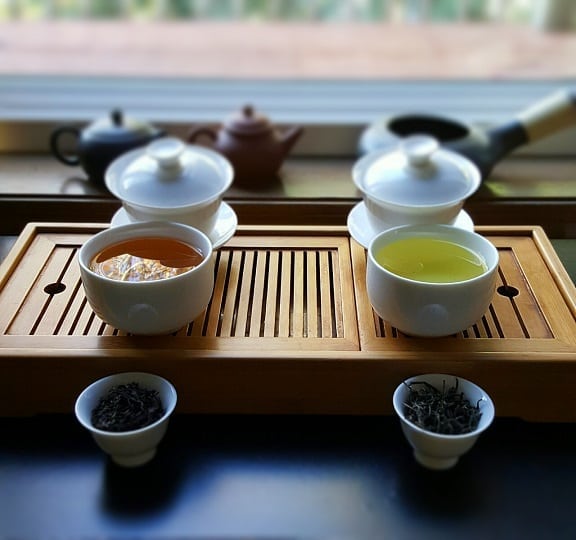
If I had to choose a favorite, it would be the green tea. Not surprising considering the cultivars used—Yabukita, Sayakamaori, etc.—are all tailor-made for green teas. But don’t take that to mean their black tea wasn’t excellent; ooooh man, it was. Whatever Arakai is doing with teas, they can keep on doing it.
I’ve even caught wind on Instagram of some of their efforts in growing coffee.
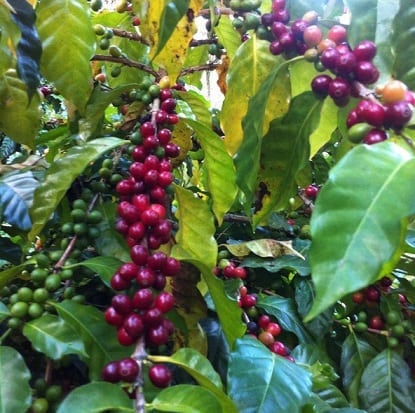
Image owned by the Arakai estate.
No, really.
What can I say, I’m a fan of innovative insanity. Because . . . BIKE HARVESTER!!!
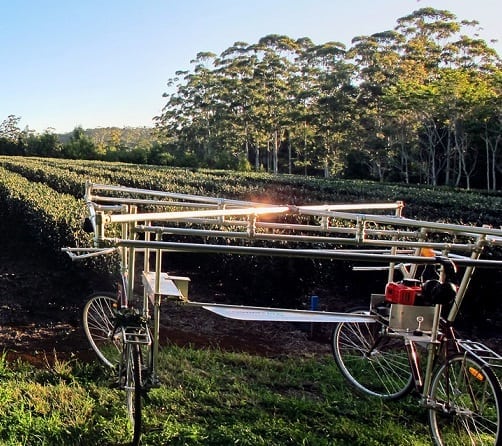
Image owned by the Arakai estate.
To buy their teas from What-Cha, go HERE.
For more information on the estate, go to their website, HERE.

Margo Hutchinson
WOW!
Xavier
Thanks for bringing a new estate on the radar.
Quinnan
I have been drinking the black all this week, it is *so* good, probably my new favourite tea.